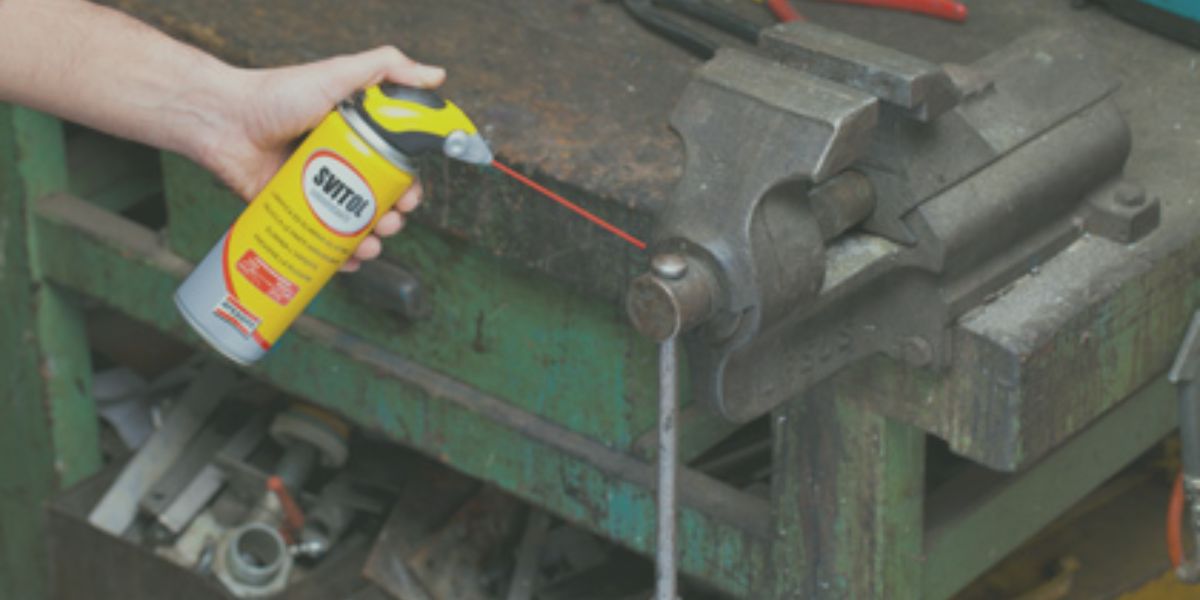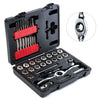
How to Maintain Your Vice for Optimal Performance
This comprehensive guide will provide you with a deep understanding of the importance of maintaining your vice, specific maintenance needs for different types of vices, general maintenance guidelines, troubleshooting common issues, and a professional conclusion to help you keep your vice in top working condition
- Introduction
- The Importance of Vice Maintenance
- Types of Vices and Their Specific Maintenance Needs
- General Maintenance Guidelines
- Troubleshooting Common Vice Issues
- Conclusion
Introduction
For DIY enthusiasts, handymen, and professionals alike, a well-functioning vice is an indispensable tool in the workshop. It provides stability and support when working on various projects, such as woodworking, metalworking, or general repair tasks. However, like any other tool, a vice requires regular maintenance to ensure optimal performance and longevity.
The Importance of Vice Maintenance
Maintaining your vice is crucial for several reasons:
- Safety: A well-maintained vice ensures a secure grip on the workpiece, reducing the risk of accidents and injuries.
- Precision: Properly functioning vices allow for more accurate and consistent results in your projects.
- Longevity: Regular maintenance can significantly extend the lifespan of your vice, saving you money on replacements.
- Efficiency: A smooth-operating vice enables you to work more efficiently and complete tasks with less effort.
Types of Vices and Their Specific Maintenance Needs
There are several types of vices, each with its own unique maintenance requirements. We will discuss four common types: bench vices, pipe vices, drill press vices, and woodworking vices.
Bench Vices
Bench vices are versatile tools used for securing various workpieces. They typically have steel or iron jaws and a swivel base for easy positioning.
Maintenance needs:
- Regularly clean and lubricate the screw and sliding surfaces.
- Inspect the jaws for wear or damage and replace them if necessary.
- Ensure the swivel base is functioning correctly and tighten any loose bolts.
Pipe Vices
Pipe vices are specifically designed for holding pipes and tubes securely in place during cutting, threading, or welding tasks.
Maintenance needs:
- Clean and lubricate the chain, yoke, and screw regularly.
- Check for worn or damaged chain links and replace as needed.
- Inspect the yoke and jaws for wear or damage and replace them if necessary.
Drill Press Vices
Drill press vices are used to hold workpieces steady while drilling, milling, or tapping operations on a drill press machine.
Maintenance needs:
- Clean and lubricate the sliding surfaces and screw regularly.
- Inspect the jaws for wear or damage and replace them if necessary.
- Ensure the vice is securely fastened to the drill press table and adjust if needed.
Woodworking Vices
Woodworking vices are designed for holding wooden workpieces securely during cutting, shaping, or joining tasks.
Maintenance needs:
- Regularly clean and lubricate the screw and sliding surfaces.
- Inspect the wooden jaws for wear or damage and replace them if necessary.
- Ensure the vice is securely fastened to the workbench and adjust if needed.
General Maintenance Guidelines
While each type of vice has specific maintenance requirements, there are some general guidelines that apply to all vices.
Cleaning
Keeping your vice clean is essential for smooth operation and preventing premature wear. Follow these steps:
- Remove any debris or dust from the vice using a brush or compressed air.
- Wipe down the vice with a clean cloth or rag to remove grease, oil, or dirt.
- Use a mild detergent and water to clean stubborn stains or grime, then dry the vice thoroughly.
Lubrication
Lubrication is vital for reducing friction and wear on moving parts. Here are some tips for proper lubrication:
- Use a high-quality, multi-purpose grease or oil to lubricate the screw and sliding surfaces.
- Apply a thin layer of lubricant to the moving parts, ensuring full coverage.
- Wipe away any excess lubricant to prevent attracting dirt and debris.
Inspection and Adjustment
Regular inspection and adjustment of your vice help maintain its accuracy and performance. Follow these steps:
- Inspect the jaws for wear or damage. If necessary, replace them or have them reground to ensure a secure grip on the workpiece.
- Check the screw and sliding surfaces for signs of wear or corrosion. Clean and lubricate them as needed.
- Ensure the vice is securely fastened to the workbench or machine table. Tighten any loose bolts or clamps.
Storage
Proper storage is essential for protecting your vice from damage and prolonging its lifespan. Here are some tips:
- Store the vice in a dry, well-ventilated area, away from direct sunlight or sources of moisture.
- If storing the vice for an extended period, apply a thin layer of oil or rust preventative to the metal surfaces.
Related Article: All You Need To Know About Spring Clamps
Troubleshooting Common Vice Issues
Here are some common vice issues and their solutions:
Sticking or Slipping Jaws
If the jaws of your vice stick or slip when tightened, try the following:
- Clean and lubricate the screw and sliding surfaces. This can help to reduce friction and improve the smoothness of the vice's operation.
- Inspect the jaws for wear or damage and replace them if necessary. Damaged or worn jaws can cause the vice to slip or stick, affecting its performance and safety.
- Check the alignment of the jaws and adjust as needed. Proper alignment can help to ensure an even grip on the workpiece and prevent sticking or slipping.
Damaged or Worn Jaws
Damaged or worn jaws can cause an insecure grip on the workpiece. If you notice this issue:
- Replace the jaws with new ones or have them reground. New or reground jaws can restore the vice's gripping power and improve its overall performance.
- Ensure the jaws are properly aligned and tightened. Proper alignment and tightening can help to ensure a secure grip on the workpiece and prevent further damage to the jaws.
- Avoid over-tightening the vice, as this can cause damage to the jaws. Over-tightening can lead to excessive wear or even breakage, reducing the effectiveness of your vice
Misaligned Jaws
Misaligned jaws can result in an uneven grip on the workpiece, leading to inaccuracies in your work. To fix this issue:
- Loosen the vice and reposition the jaws so they are parallel.
- Tighten the vice evenly, ensuring the jaws remain aligned.
- Inspect the jaws for wear or damage and replace them if necessary.
The proper maintenance of your vice is essential for ensuring safety, precision, longevity, and efficiency in your workshop. By understanding the specific maintenance needs of various types of vices, adhering to general maintenance guidelines, addressing common issues through troubleshooting, and implementing appropriate storage practices, you can optimize the performance and extend the lifespan of your vice.
Regular inspection and maintenance not only saves you money on potential replacements but also contributes to achieving superior results in your DIY projects and professional tasks. Prioritizing the care of your vice will ultimately lead to a safer, more accurate, and more enjoyable working experience.



